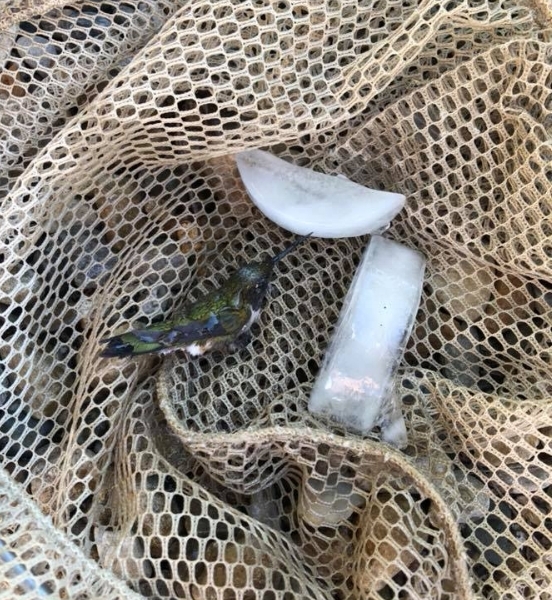When a hummingbird flies into an outbuilding or garage, it will not fly down so it typically dies from heat and exhaustion. Most birds achieve lift only when they flap their wings downwards, but hummingbirds can do so on the upstroke too by inverting their wings. Insects achieve a similar feat by inverting their wings at the base, but a hummingbird is constrained by its skeleton, so the mechanism for its maneuver has been unknown until recently.
The ruby throat hummingbird (Archilochus colubris) stays aloft using insect-like flight mechanics:
“It has adopted an insect-like flight style with the evolutionary heritage of a vertebrate,” says Tyson Hedrick, a biologist at the University of North Carolina in Chapel Hill, who led the study. “It has got essentially the same arm bones that we have but it’s doing this funny thing with its shoulder, flipping the wing back and forth like a fruit fly rather than a pigeon.”
By filming ruby throat hummingbirds (Archilochus colubris) in flight, Hedrick showed that the birds invert their wings by twisting their wrists. “It looks like it’s affecting the whole wing because the bird’s skeleton is very compressed and its wrist isn’t very far from its shoulder,” says Hedrick.
This hummingbird was rescued by carefully netting and lowering it to the ground. Ice cubes were placed near the exhausted bird to reduce the ambient temperature as it was overheated and unresponsive. It worked! After struggling to fly and resting for a few minutes on a nearby hydrangea leaf, the bird recuperated and resumed normal flight and behavior.
THIS is rescue.
THIS is Wishes For Wildlife Foundation!
